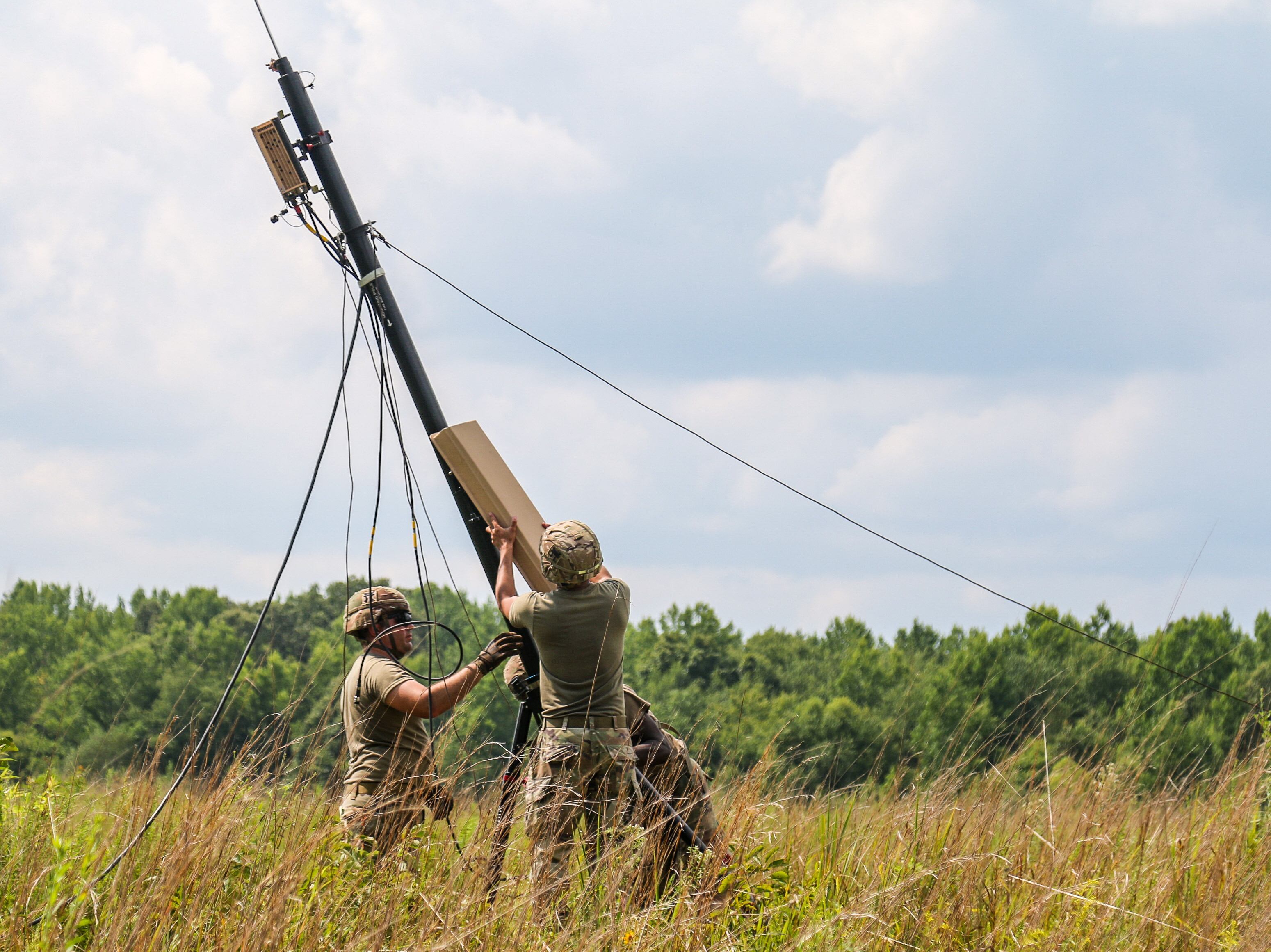WASHINGTON — The U.S. Army wants to make its command posts nimbler and more easily concealable to survive intense, widespread fights of the future, and it’s pulling lessons from the invasion of Ukraine to inform the effort.
Command posts of the past were relatively stationary, cumbersome to set up and break down, and often identifiable by the heat, noise and electronic artifacts they give off. Such easy targets will not cut it in a fight against China or Russia, world powers with mature sensing and targeting capabilities, according to Army officials.
So the service is investing in several projects to make the battlefield hubs hardier, including what are known as Command Post Integrated Infrastructure and the less-mature Mobile and Survivable Command Post. The former combines trucks with communication nodes and off-the-shelf commercial technologies for intuitive use. The latter could feature remote antenna systems, enhanced camouflage techniques and self-sufficient power generation and banking.
“Five years ago, two years ago, we spent a day setting up a command post and then we spend a day tearing it down, so the command post was never able to really fight,” Ward Roberts, the assistant program executive officer for command, control and communications-tactical, or PEO C3T, said at a virtual C4ISRNET event May 16. “Now, the idea is that commander needs to be maneuvering the command post as well as maneuvering his elements.”
“Between the ability to move the command post around and the efforts to reduce the ability to detect the command post — two lines of effort really driving at solving that problem of ‘how do we make the command post survivable,’” he added.
A conflict with either China or Russia would mean defending against an array of eager eyes and ears: drones overhead, signals intelligence capabilities that can cue in on communications, and other long-range sensors. Commanders need to understand their footprint, Ward said, as well as how to manipulate the hardware they have in hand.
The envisioned future — to which the broader Defense Department is cleaving — is a far cry from the decades the U.S. spent waging counterterrorism campaigns in the Middle East, where combatants were less equipped and less technologically savvy.
“Most of our commanders have grown up not having to worry about that problem. When you were in a forward-operating base in Iraq and Afghanistan, it wasn’t a challenge,” Roberts said. “We have seen that when you have a highly skilled enemy, you can’t sit there very long. If you do sit there and long, they’re going to find you. If they can find you, they can target you.”
Footage captured in Ukraine and disseminated through social media, among other outlets, shows the dangers of staying still; entrenched troops are often the pickings of airdropped ordnance, as are slow-rolling vehicles.
Maj. Gen. Jeth Rey, the director of the Army’s Network Cross-Functional Team, earlier this month told reporters there is a clear demand for mobility. Minutes in the same place can mean the difference between life or death.
“We can’t halt,” said Rey, who works closely with PEO C3T. “One of the big things we’re moving forward on is on-the-move capabilities for them.”
Colin Demarest was a reporter at C4ISRNET, where he covered military networks, cyber and IT. Colin had previously covered the Department of Energy and its National Nuclear Security Administration — namely Cold War cleanup and nuclear weapons development — for a daily newspaper in South Carolina. Colin is also an award-winning photographer.





